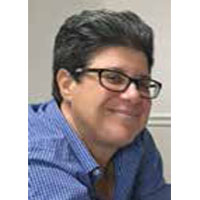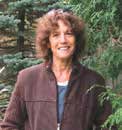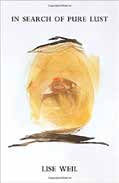 By Michele Karlsberg–
By Michele Karlsberg–
Michele Karlsberg: Lise Weil’s memoir In Search of Pure Lust is featured in this issue of the San Francisco Bay Times. I asked Weil to discuss how second wave feminist history has been distorted and erased, and how her book is a response to that distortion. She also explains how lesbian desire is the key to understanding what second wave feminist history was truly about.
Lise Weil: My memoir, In Search of Pure Lust, began as a meditation on lesbian desire. Lesbian desire was the single most transformative force I had known. I wanted to remember and record the utter exhilaration of it, desiring and being desired by a woman, how it opened up untold realms of possibility—and also how from the very start it was inseparable from my desire for a different world, a world with women at the center of it.
 Lesbian desire threw me into the company, and into the arms, of women I would never have encountered on my narrow path from elite high school to Ivy League college and grad school. Steeped in the writings of Judy Grahn, Dorothy Allison, Bertha Harris, Audre Lorde, Gloria Anzaldua, June Jordan and Pat Parker, alongside Adrienne Rich and Mary Daly, it was impossible to persist in imagining that white middle class academics could figure it all out by ourselves.
Lesbian desire threw me into the company, and into the arms, of women I would never have encountered on my narrow path from elite high school to Ivy League college and grad school. Steeped in the writings of Judy Grahn, Dorothy Allison, Bertha Harris, Audre Lorde, Gloria Anzaldua, June Jordan and Pat Parker, alongside Adrienne Rich and Mary Daly, it was impossible to persist in imagining that white middle class academics could figure it all out by ourselves.
Lesbian desire broke me out of the class and race bubble I was born into. When people talk about intersectionality now, as if it were something that only came into being in this century, and when people talk about second wave feminism as if it were a bunch of naïve white middle class sex-negative prudes—they aren’t talking about the lesbians. They have no idea what we were up to. Which is to say that they have no idea what second wave feminism was truly about—because it was lesbians, and definitely not only white lesbians, who were the prime movers in almost every realm. And what we were about was burning through all of the old divisions and paradigms, overruling all of the male authorities who ever lived in our heads.
As for the sex-negative part: In 1976, when I came out, I came out into a world with lesbian desire as its pulsing center. We were riding a giant wave of lust and love buoyed by the poets, songwriters and philosophers of the day who each, in her own way, was proclaiming the rightness and greatness of this love and lust.
 My memoir is full of these scenes—set in, among other places, a Holly Near concert in New York; a women’s writing center in upstate New York; and the lesbian bars and restaurants and feminist bookstores of Boston. But increasingly as I wrote (over a period of fifteen years), it was impossible to deny that this world was vanishing, if not already lost, and so I felt compelled to chronicle it in as much detail as possible, warts and all: our stumbles and squabbles both collective and personal (my own failures in love are amply documented), alongside the body/soul epiphanies, the blazing creativity and the remarkable institutions these gave rise to.
My memoir is full of these scenes—set in, among other places, a Holly Near concert in New York; a women’s writing center in upstate New York; and the lesbian bars and restaurants and feminist bookstores of Boston. But increasingly as I wrote (over a period of fifteen years), it was impossible to deny that this world was vanishing, if not already lost, and so I felt compelled to chronicle it in as much detail as possible, warts and all: our stumbles and squabbles both collective and personal (my own failures in love are amply documented), alongside the body/soul epiphanies, the blazing creativity and the remarkable institutions these gave rise to.
Lesbian desire was at the origin of all of it, and I wanted my memoir to be a document that would not allow any of us to forget, ever. I want it still.
Lise Weil was the editor of “Trivia: A Journal of Ideas” and its online relaunch “Trivia: Voices of Feminism.” She is the founding editor of “Dark Matter: Women Witnessing” ( www.darkmatterwomenwitnessing.com ) and teaches in the Goddard Graduate Institute. Born in Chicago, she moved to Montreal in 1990.
Michele Karlsberg Marketing and Management specializes in publicity for the LGBTQI community. This year, Karlsberg celebrates thirty years of successful book campaigns.
Recent Comments